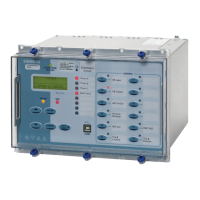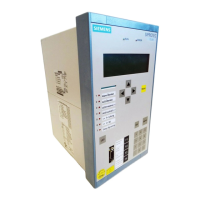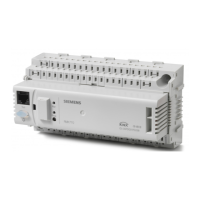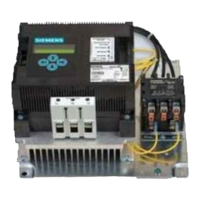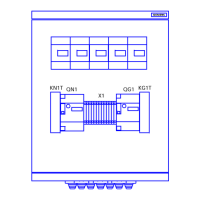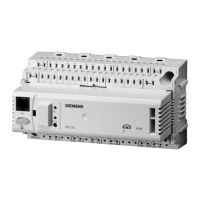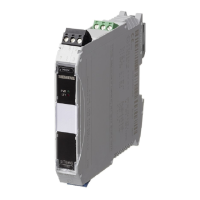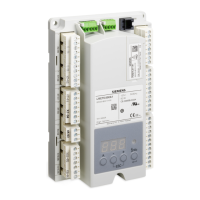7SG15 MicroTAPP Communications Interface
The sigma units 1 & 3 contain switches to switch between Light off and Light on. On Sigma 4 this is achieved with
a jumper connection, jumper OFF is light off. This setting has no effect on the electrical Com2 port.
3.2.6 Com1 Data Echo and Com2 Data Echo
When the relays are connected in a ring this setting should be on, enabling data to be echoed from one relay to
the next. Otherwise it should be off to reduce the communications overhead.
3.2.7 Com2 Direction
This setting affects how the Com2 ports, fibre optic or electrical are used. Options are Auto-Detect, Rear Port
and Front Port. Auto-Detect automatically switches to the front port when a device is plugged into it, reverting to
the rear when the device is removed. The Rear Port and Front Port setting explicitly defines which port is active. If
you try to communicate with a port when the other is active no communication will take place.
4 Fibre Optic Data
4.1 Launch Power (dBm)
The amount of light that can be focussed into the fibre.
SOURCE
CABLE TYPE
Argus (p) Argus Modular I Modular
II
Sigma 1 Sigma 3
(p)
Sigma 3 Sigma 4
(p)
Sigma 4
1 mm polymer
-10.5 -7 -10 -7 -7 14.8 -14.6 10.6 -14.6
200 µm PCS
-14.4 -6.2 -11.7 -6.2 -6.2 21.8 -13.4 21.7 -13.4
62.5 / 125 µm
glass
-29 -16 -20 -16 -16 -22.7 -22.7
50 / 125 µm glass
-32.6 -19.8 -22.8 -19.8 -19.8 -26.2 -26.2
P = Polymer
G = Glass
4.2 Receiver Sensitivity (dBm)
The minimum amount of light required for operation.
DESTINATION
Argus (p) Argus Modular
I
Modular
II
Sigma
1
Sigma 3
(p)
Sigma
3
Sigma 4
(p)
Sigma
4
Sensitivity (dBm)
-20 -24 -24 -24 -24 -20 -25.4 -25.4 -25.4
P = Polymer
G = Glass
4.3 Distance Calculation
Taking the launch power and receiver sensitivity from the above two tables, and allowing for a safety margin,
losses due to joints in the cables and the loss per kilometre in the cables as specified by the cable manufacturer,
the distance can be calculated as follows:
oMetreLossPerKil
JointLossinSafetyMargnsitivityReceiverSerLaunchPowe
kmDistance
−

